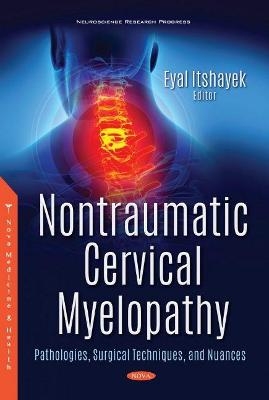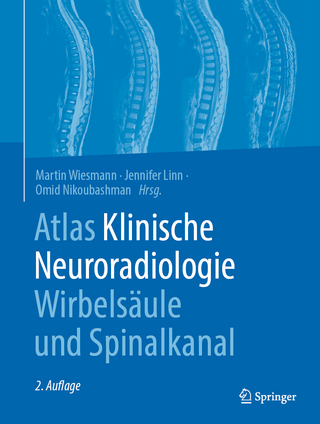
Nontraumatic Cervical Myelopathy
Nova Science Publishers Inc (Verlag)
978-1-5361-7251-5 (ISBN)
Preface; Acknowledgements; Descriptive Anatomy and Embryology of the Cervical Spine; Biomechanics of the Cervical Spine; Differential Diagnosis of the Cervical Spine: Clinical Evaluation; Electrophysiological Assessment in Cervical Spine Disorders; Radiological Evaluation of the Non-Traumatic Cervical Spine; Sagittal Alignment of the Cervical Spine; Utility of Gait Analysis in Patients with Cervical Myelopathy; Timing of the Diagnosis in Degenerative Cervical Myelopathy; Indications and Timing of Surgery in Degenerative Cervical Myelopathy; Stem Cell Therapy in the Management of Cervical Degenerative Disease; C1-2 Instability and Degenerative Cervical Myelopathy; Cervical Decompression and Fusion through an Anterior Approach; Posterior Cervical Decompression with Cervical Laminoplasty; Posterior Approaches to the Cervical Spine Cervical Decompression and Fusion through an Anterior Approach; Tumors of the Craniocervical Junction; Surgical Approaches to the Craniocervical Junction for Neoplastic Lesions; Surgical Approaches in Metastatic Disease Involving the Craniocervical Junction; Intradural Extramedullary Spinal Cord Tumors; Intradural Intramedullary Spinal Cord Tumors; En Bloc Resection of Primary Bone Tumors of the Cervical Spine: Surgical Considerations and Avoiding Complications; Surgical Management of Spinal Metastases Involving the Cervical Spine; Advanced Radiotherapy for the Primary Tumors in Cervical Spine; Advanced Radiotherapy for Metastatic Disease of the Cervical Spine; Stereotactic Radiosurgery for the Management of Intradural Neoplasms of the Cervical Spine; Cervical Kyphosis and Scoliosis; Vertebral Osteomyelitis, Discitis, and Epidural Abscess of the Cervical Spine in Intravenous Drug Users; Cervical Myelopathy of Vascular Origin; Cervical Myelopathy in Pediatric Patients; The Cervical Spine in Achondroplasia; Tuberculosis of the Cervical Spine; The Role of Sagittal Alignment in Surgery for Degenerative Cervical Myelopathy; Fusion Techniques for C1C2 Instability; Transoral Approach for the Lesions of the Dens; Endoscopic Endonasal Approach to the Craniocervical Junction; Full-Endoscopic Surgical Strategies with Anterior and Posterior Approaches; Anterior Cervical Discectomy and Fusion: The Controversy between Use of an Interbody Graft with Anterior Plating versus a Stand-Alone Cage; Cervical Disc Arthroplasty; Robotic and Image-Guided Surgery in the Cervical Spine; Operative Neurophysiology of the Cervical Spine; Surgical Complications with the Anterior Approach; Surgical Complications with the Posterior Approach; The Future of Cervical Myelopathy Management; Index.
| Erscheinungsdatum | 14.05.2020 |
|---|---|
| Sprache | englisch |
| Gewicht | 1420 g |
| Themenwelt | Medizinische Fachgebiete ► Chirurgie ► Neurochirurgie |
| Medizinische Fachgebiete ► Chirurgie ► Unfallchirurgie / Orthopädie | |
| Naturwissenschaften ► Biologie ► Humanbiologie | |
| Naturwissenschaften ► Biologie ► Zoologie | |
| ISBN-10 | 1-5361-7251-0 / 1536172510 |
| ISBN-13 | 978-1-5361-7251-5 / 9781536172515 |
| Zustand | Neuware |
| Haben Sie eine Frage zum Produkt? |
aus dem Bereich


